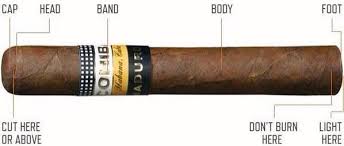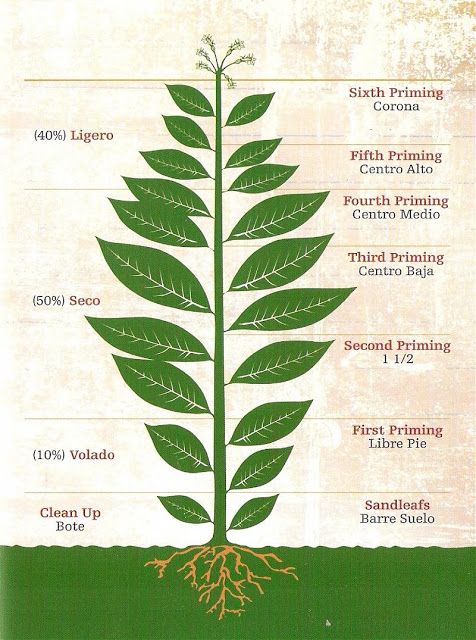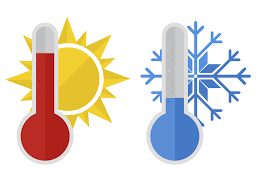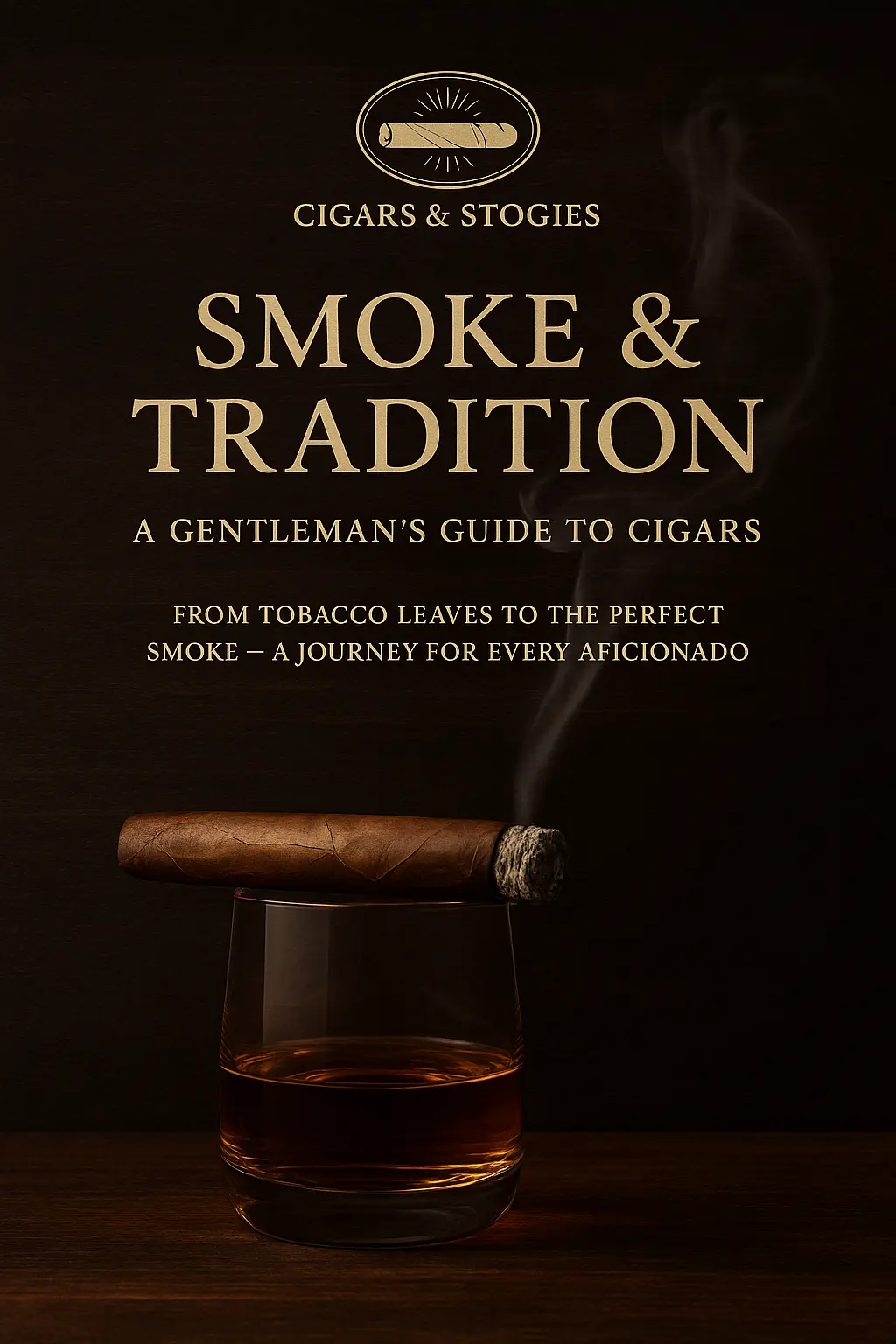Cigar tobacco leaves will obviously make or break your cigar. There are different areas of the tobacco plant that make up the different parts of the cigar. So each part of the cigar is assembled from different parts of the tobacco plant. Once you know this information then you can appreciate your cigars characteristics. Read more to appreciate this unique bond between plant and cigar.
Cigar Parts
As you can see in the diagram the cigar is made up of different parts. There is the cap and shoulder where you smoke the cigar. The foot of the cigar is where you light the cigar. Then, you have the middle section that is the body of the cigar. Each of these parts is made from a specific area of the tobacco plant.

Cigar Tobacco Leaves and Cigar Parts
This plant is one of the most interesting plants in the world. From the beginning of western civilization where the settlers bonded with the Indians and smoked tobacco, (among other things). To the current age where you can only enjoy your cigar in certain areas. It is very interesting to learn the history of this plant and how it has been enjoyed and also demonized by so many different people. I could go on a political rant, but I won’t. On to the tobacco plant…
The tobacco plant has a few parts and harvesting these parts in a particular fashion will result in some amazing cigars.
Sections Of Tobacco Plant & Cigar Tobacco Leaves
The Volado
First thing to do is look at the tobacco plant parts. There is the root structure and then coming up from there is the first set of leaves.
These leaves are called the Volado. Being at the bottom of the plant these leaves do not receive a lot of sunshine and are a little denser and will burn easier.
Therefore, they are part of the middle of the cigar. That way this blend of tobacco will burn and keep the cigar lit.
The Seco
Secondly, there is the next layer and that is called the Seco. This layer is more of a mix of refined tobacco with more taste. It is good for the the binder of the cigar.
There are different areas of the Seco. These areas are the second, third and fourth priming. Each area moving closer to the top of the plant. Further, each can be used for other parts of the cigar depending on their texture and composition.
The Ligero
Third, is the robust layer of the Ligero. This is the top of the plant that receives direct sunshine. It is a lush layer of tobacco leaves with all the nuances of tobacco flavor. Ligero is often the strongest part of the tobacco plant.
Within each layer there are sublayers as described above. Understand that each sublayer and layer of the plant will make up the entire cigar. You can see each layer on the diagram below.

Combining The Parts For A Great Cigar
When one knows the different parts of the cigar and the tobacco layers you can appreciate the ability how a cigar is put together.
Furthermore, one can see how a mixture of the tobacco plant could lead to a cigar that does not burn properly, too little Volado. Or how a certain mixture would burn too fast, too much volado.
Interestingly enough if you think long and hard about the structure of the cigar one could envision what would make a perfect cigar. The right mix of Volado, Seco and Ligero.
Tobacco Climate - Too Hot Or Too Cold...

Like any good plant, one needs the right type of soil and temperature. However, tobacco has been planted as far north as Canada and even Alaska. But most tobacco used for cigars is grown in warm climates. In addition, the soil has good drainage and the plant receives adequate amounts of water.
Most cigars purchased today come from tobacco that is grown in the South American and Caribbean countries. Obviously any cigar lover would know about Cuba, Dominican Republic and Nicaragua to mention a few. Their climate is optimum for great tobacco growth and hence great cigar production.
Having said that there are other areas with great tobacco production. You can check your local tobacconist and find out what other countries have great cigars that you may want to try. If you want to read more then check out The Ultimate Cigar Book here. This is a great read on cigars and a great table top discussion book.
Putting It All Together
Now that you know the different parts of the tobacco plant you can see what it takes to make a great cigar. So as you smoke your next cigar you can appreciate how the Volado is keeping the cigar lit. If your cigar is going out too often, then it may need more Volado. Conversely, if it burns too fast then you may need less Volado. Learn how to light and smoke a cigar here. Remember to Think of the binder and wrapper flavor as well.
A good cigar maker will change the contents of the cigar to make it exactly what they want for flavor. The variations of tobacco in the cigar can be limitless. So that can explain all the different types of flavors and nuances with each cigar.
You can even think a little further about how the climate for that year impacted the tobacco plant. If it was good weather, then the plant will produce great leaves and a great cigar if it is constructed well. Unfortunately, the opposite can happen with bad weather. Also, if the plant was not farmed or harvested with care then the plant will produce inferior leaves and poorer cigars.
All the best,
Dr. B


